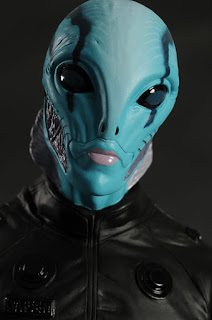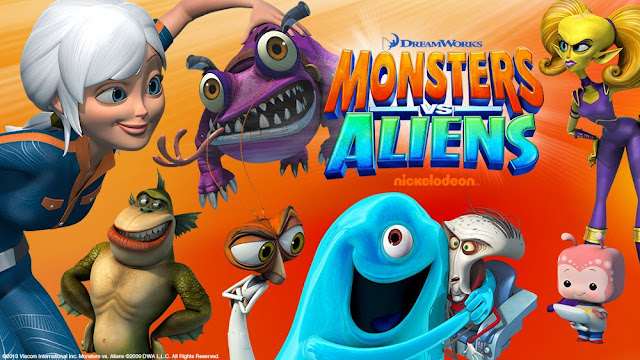IDW's The Fly: Outbreak Lacks Buzz
Sometimes it's nice to see a movie franchise find a second life in another medium, like novels and comic books. Other times, the second life turns out to be a turn for the worse. In the later category is The Fly: Outbreak, a comic book miniseries published by IDW Publishing. This miniseries recently concluded its fifth and final issue and after reading the entire series, I feel that this is one insect monster story that needs to be sent back to the telepods. Read on for my complete review.
Outbreak was written by Brandon Seifert and drawn by menton3. It takes place after the events of The Fly II. Martin, son of the late Seth "Brundlefly" Brundle, has returned to Bartok Industries to continue his research into his father's telepods in order to find a lasting cure for his condition. At the beginning of the story, Martin learns that his work to permanently fix his own DNA has inadvertently created a transgenic pathogen that can turn people into insect-human hybrids. After the pathogen gets lose in a Bartok lab, the entire staff is put into quarantine to determine if a cure can be found before the disease spreads.
Let's get the good stuff out of the way first: Outbreak does feature two very interesting ideas. The first is that Seth Brundle's telepods have been repurposed away from being a method of transportation (their original function) and solely into a tool for genetic research and therapy. The other is the suggestion that Martin Brundle was never meant to rid himself of his fly genes. Martin was a human-fly hybrid from the moment of conception, which means that the fly that merged with Seth in the telepod in The Fly is just as much of a parent to Martin as his human father and mother. From this perspective, Martin's desire to cure those afflicted by the transgenic virus does not stem from guilt or selflessness but a subconscious desire to reconnect with his insect half. Each of these concepts present tantalizing possibilities, enough to make for a satisfying tale of body horror that's worthy of The Fly title. Unfortunately, these details are fleeting and barely register in the formless, inert narrative of Outbreak that's both poorly written and poorly drawn.
Seifert builds Outbreak around the transgenic virus quarantine plot, but he doesn't do much with it. Other than isolating the infected on a remote island, the protocol behind the quarantine is never clearly established so the narrative just muddles along until the infected inevitably change into insect-human hybrids. None of the victims are fleshed out (no pun intended) so the reader can't feel sympathy or horror over their transformations into something inhuman, which in turn drains all of the tension and shock out of the story's climax.
The main characters are Martin and his wife Beth, but they aren't given much to do. For most of Outbreak, Martin spends his time moping over his situation while Beth expresses her frustration with Martin's obsessive mopiness. The only other main character is Noelani, Martin's lab assistant. Seifert tries to build a subplot about a love triangle involving Martin, Beth and Noelani, but Noelani is also underdeveloped so that subplot fizzles. The misconceived love triangle builds up to a gene swap-a-thon finale that is supposed to be horrifying and tragic but is instead rushed and nonsensical.
Further dampening the story's impact is menton3's blurry, murky art. Such a style might work in a horror story about dreams or the supernatural, but it is completely out of place in the area of gruesome body horror. The insect-human hybrids in Outbreak are illustrated as simple, elongated humanoid shapes instead of clearly defined monsters, and some don't even look like insects at all. In fact, one bears a close resemblance to the amphibious Abe Sapien from Hellboy. (Note to IDW: The next time you decide to publish a comic about insect monsters, please hire an artist who really knows how to draw insects.)
Abe Sapien from Hellboy (left) and a human-insect hybrid from The Fly: Outbreak (right).
Almost everything in Outbreak is rendered in shadows or blurs, except for Martin and Beth--menton3 drew them to look exactly like late-80s era Eric Stoltz and Daphne Zuniga (the actors who played those roles in The Fly II), and it looked to me like he derived Noelani's appearance from Lucy Liu. Seeing such detailed character depictions inserted within vaguely drawn locations, monsters and supporting characters detracts from the story's subject matter and emphasizes menton3's inability to draw something accurately and vividly unless he can copy it directly from another source.
With genetic research being an ongoing topic of controversy, the ideas present in The Fly and its sequels still have plenty of narrative potential. Unfortunately, Seifert and menton3 weren't up to the task of bringing this franchise into the modern age. Save your money instead for Fly DVD and/or Blu-ray releases.
The only memorable human-insect monsters from The Fly: Outbreak are the ones on the covers.










Comments
Post a Comment